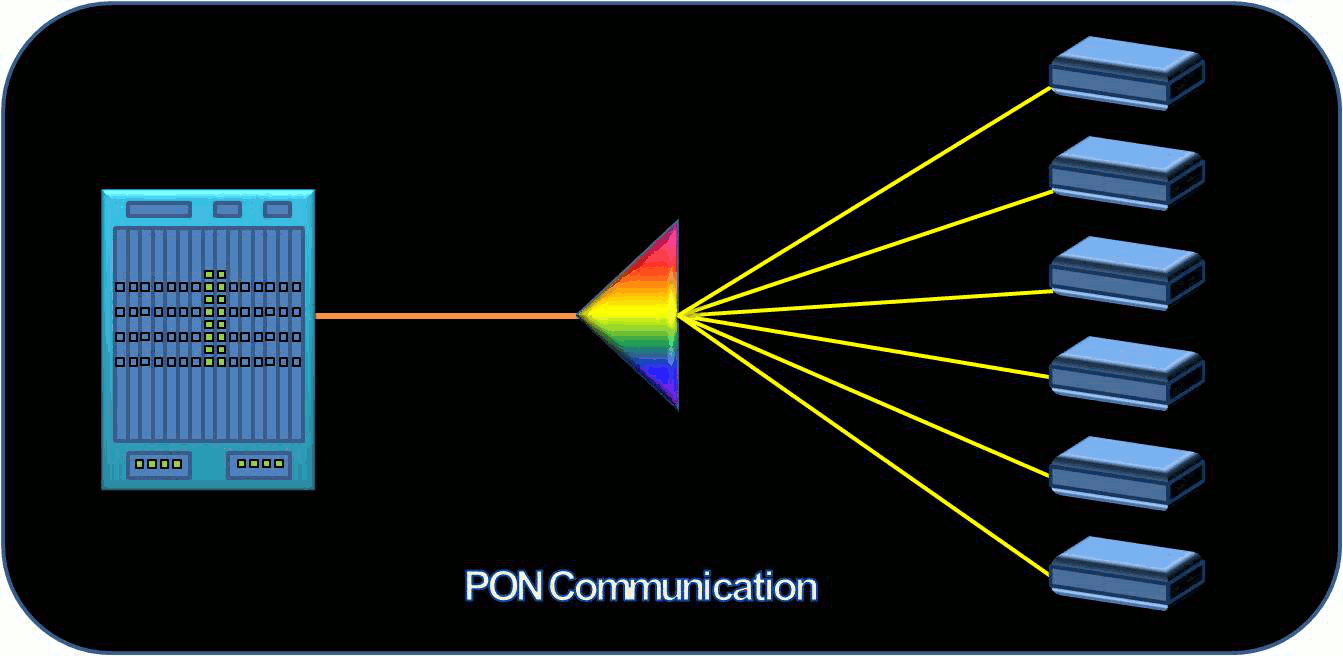Communication over a PON
While a Passive Optical Network delivers a very recognizable Ethernet service, the way in which this is accomplished is very different from a traditional Ethernet network. In the downstream direction (i.e., from the OLT to the end user) the traffic is encapsulated on the 1490 nm wavelength and sent out the PON port at 2.5 Gbps (typical GPON rate) or 1.25 Gbps (typical EPON rate). The encapsulated packets contain multiple Ethernet packets intended for multiple ONTs. The passive optical splitter in the fiber network passively duplicates these optical signals on all of its downstream fiber outputs. Just as a legacy Ethernet switch port only accepts packets intended for its own MAC address, the optical MAC associated with each ONT only accepts the packets intended (marked) for its own address. All other packets are discarded by the ONT. It is important to note that in GPON networks, these packets are 128 bit AES encrypted as well. So we characterize this downstream communication over a PON network as a broadcast mechanism.
In the upstream direction we have an entirely different process at play. At a typical 1.25 Gbps line rate, each ONT will take turns transmitting its information back up to the OLT. This communication will typically take place at the 1310 nm wavelength and is completely independent of the 1490 nm wavelength. Consider the registration that occurs when an ONT is first provisioned on the OLT. The OLT measures the distance to the ONT using optical-time-domain-reflectometry (OTDR) and calculates an efficient time slot in which the ONT is permitted to transmit up the PON. This registration or "ranging" process defines a unique opportunity or "window" in which the ONT must transmit its upstream packets. The length of time for each of the ONT's upstream window (measured in microseconds) will dynamically change to accomodate the amount of data required by each ONT on the PON. In this way, ONT's which are not currently transmitting data will retain a nominal timeslot and allow ONT's which may have larger payloads to utilize an expanded timeslot. This upstream PON communication is therefore characterized as a Time Division Multiple Access or TDMA capability.

Search site:
Advertise here



